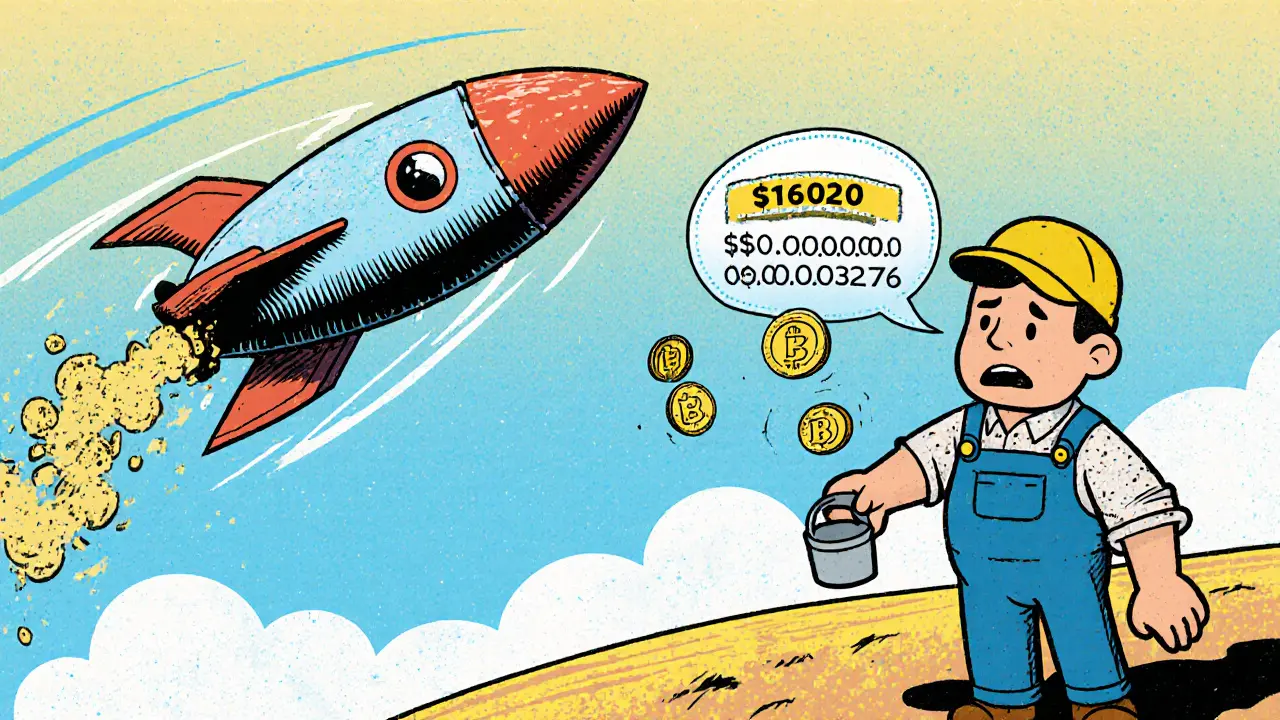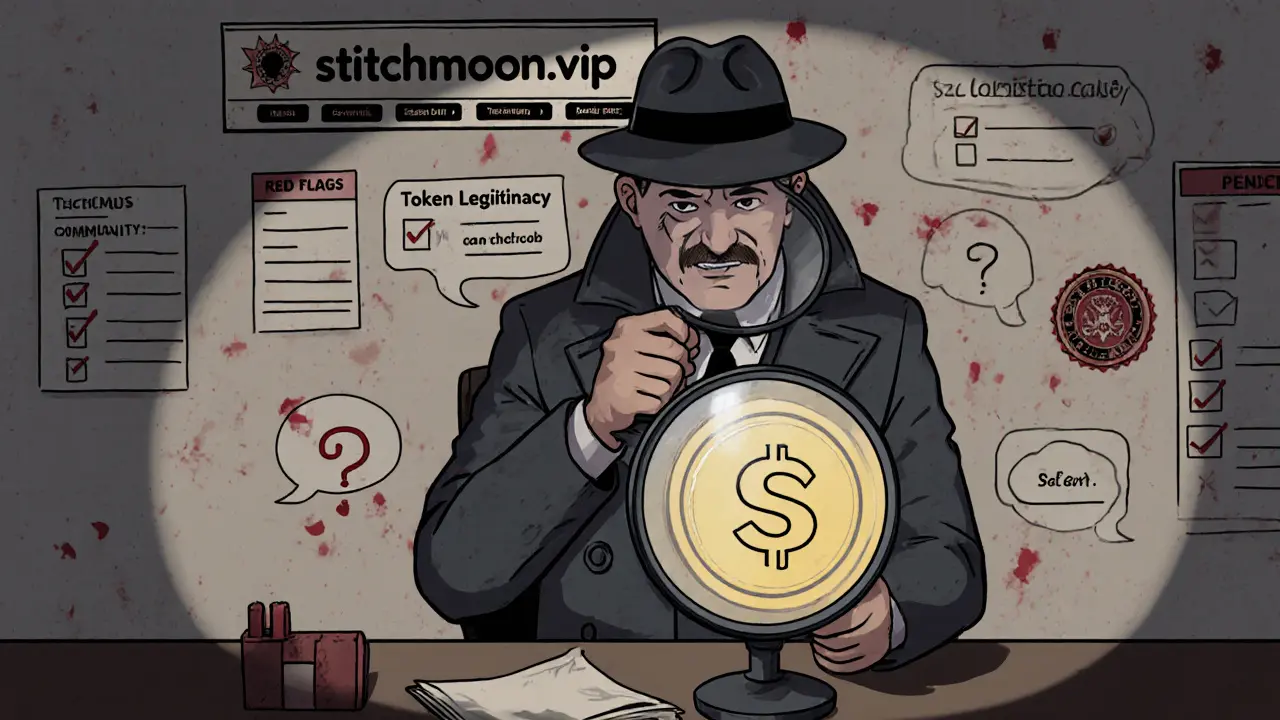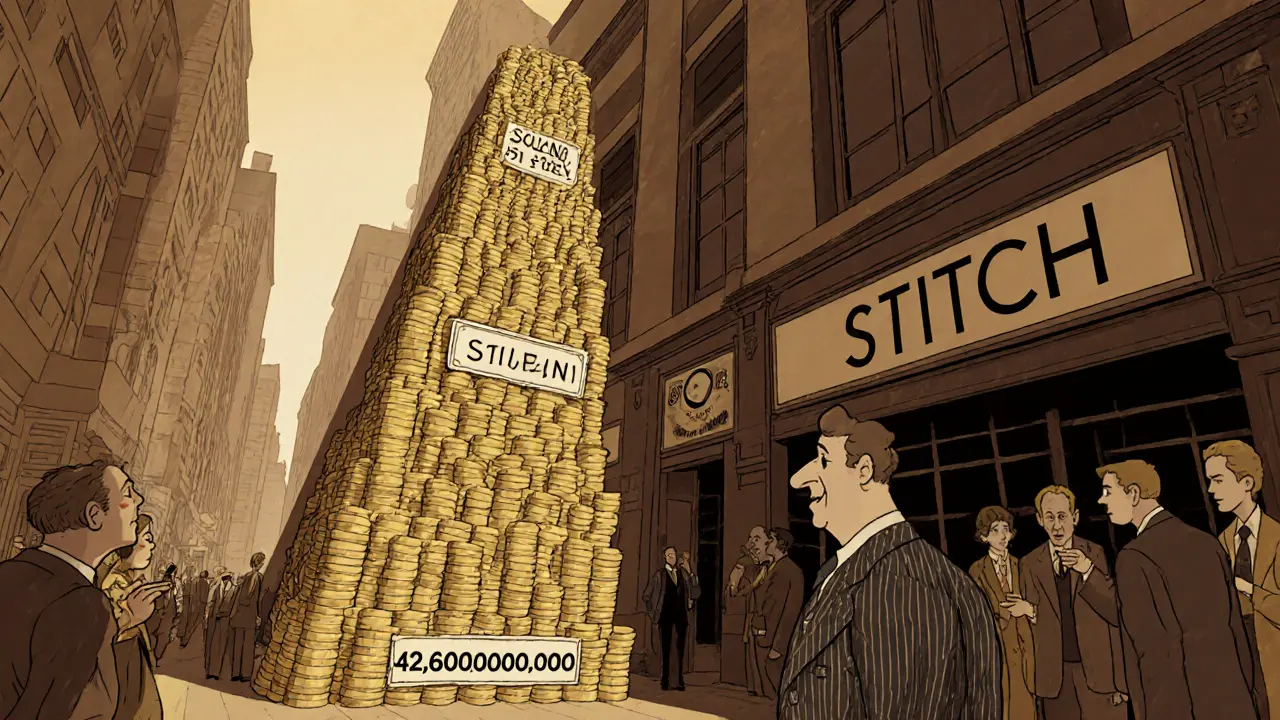Stitch (STITCH) Token Analyzer
Token Overview
Stitch (STITCH) is a Solana-based cryptocurrency with an extremely large supply of 42.69 quadrillion tokens. This tool helps you understand the implications of such a massive supply and assess the risks involved.
Supply Analysis
Total Supply: 42,690,000,000,000,000 tokens
This is approximately 42.69 quadrillion tokens, making it one of the largest supply cryptocurrencies ever created.
Such a massive supply makes price appreciation extremely difficult without a corresponding increase in market capitalization.
Price Information
Current Price: ~$0.000000000000376
At this price point, each token is worth less than a millionth of a cent.
Average price across trackers: $3.27e-13 to $3.765e-13 USD
Risk Assessment
High Risk
This token is considered extremely high-risk due to:
- No whitepaper or roadmap
- Zero trading volume
- Unverified social media
- Misspelled domain name
- Potential SEC classification as a security
The token lacks fundamental value and is likely a pump-and-dump scheme.
Market Data Summary
- 24-hour Trading Volume: $0.00
- 30-day Volatility: 16%
- Market Cap: ~$0.014
- Liquidity: Extremely Low
Low liquidity makes trading nearly impossible and exposes investors to high slippage and scams.
Key Takeaways
- Stitch's supply is so large that price appreciation requires an unrealistic market cap.
- There is no active community or verified information about the project.
- Trading is nearly impossible due to zero liquidity on major exchanges.
- The token may be classified as a security by regulators due to its supply structure.
- Investing in STITCH carries a very high risk of losing your entire investment.
Ever see a crypto with a supply so massive it looks like a typo? Stitch crypto fits that bill. Launched on Solana in 2025, STITCH claims a whopping 42.69 quadrillion tokens, yet its price hovers near zero and trading volume is essentially dead. If you’re wondering whether this meme‑coin is a hidden gem or a textbook pump‑and‑dump, read on. We’ll break down the token’s basics, technical background, market data, and red flags so you can decide if it’s worth a glance-or a hard stop.
What is Stitch (STITCH)?
Stitch (STITCH) is a cryptocurrency token built on the Solana blockchain. The project’s official site, stitchmooon.vip, offers no whitepaper, team bios, or roadmaps. The only concrete detail is its token contract, which shows a total supply of 42,690,000,000,000,000 tokens-about 42.69 quadrillion.
That supply size is unusual even among meme coins. Most meme projects keep the number in the trillions or low quadrillions to create a psychological hook: “I have millions of tokens!” But with STITCH, the sheer magnitude makes any price movement feel impossible without a massive market cap.
How does the Solana blockchain affect STITCH?
Solana is known for fast, cheap transactions-often under a tenth of a cent. While that sounds perfect for a token with a micro‑cent price, the reality is harsher. Solana’s base fee sits around $0.00025, which is higher than the value of thousands of STITCH tokens at current market prices. In practice, moving STITCH around costs more than the coin is worth, killing any real‑world use case.
The blockchain’s speed does help hide low‑liquidity tokens from casual observers because price updates happen instantly on the few exchanges that list them. Unfortunately, it also means there’s little time for traders to react before price spikes (often artificial) disappear.
Current market data - price, volume, and volatility
Data for STITCH is all over the place. CoinMarketCap lists a price of $3.27e-13 USD, while Crypto.com shows $3.765e-13 USD. CoinCodex jumps to $0.00004559 USD. Such disparities point to data errors, thin order books, or possibly multiple tokens using the same ticker.
- 24‑hour trading volume: reported as $0.00 on most trackers, with Liquidity Finder noting activity on just one market.
- 30‑day volatility: around 16% according to CoinCodex.
- Technical indicators (as of August 2025): 50‑day SMA $0.00004473, 200‑day SMA $0.00005135, 14‑day RSI 53.28.

Supply mechanics and why they matter
The 42.69 quadrillion supply isn’t a typo; it’s a deliberate design choice. In crypto economics, a massive supply can lower the perceived price per coin, making it appear cheap. However, the math shows why this is a trap:
- Current price (average of listed sources) ≈ $0.000000000000376 USD.
- Market cap = price × supply ≈ $0.014 (i.e., 14cents).
- To push the price to $0.000001, the market cap would need to hit $42.69billion-far beyond Solana’s entire ecosystem value during its 2021‑2022 peak.
Is STITCH listed on any reputable exchanges?
Official exchange listings are scarce. The few platforms that claim to support STITCH-Binance, Crypto.com, and CoinMarketCap-all mark the token as “not tradable” or show zero volume. Decentralized exchanges on Solana (like Raydium’s DEX) occasionally list obscure tokens, but even there STITCH’s order books are empty. Because of the lack of liquidity, attempting to buy STITCH on a major exchange often results in a “Insufficient liquidity” error. The only practical route is through peer‑to‑peer swaps on obscure Solana DEX aggregators, which carry high slippage and expose you to scams.
Red flags and legitimacy concerns
When you stack the facts, a pattern emerges:
- No whitepaper or development roadmap.
- Official domain uses a misspelled “mooon” and no verified social media channels.
- Supply size triggers SEC scrutiny-2024 guidance warned that quadrillion‑level supplies could be deemed securities.
- Price data wildly inconsistent across trackers.
- Trading volume effectively zero.
- Community presence is almost non‑existent; only three Reddit mentions in the past year.
All these signals point to a high‑risk token, likely a pump‑and‑dump experiment aimed at inexperienced investors who are attracted by the idea of holding “millions” of coins.
How does STITCH compare to other Solana meme coins?
| Token | Blockchain | Total Supply | Price (USD) | 24h Volume (USD) |
|---|---|---|---|---|
| Stitch (STITCH) | Solana | 42.69quadrillion | ~3.3e‑13 | $0.00 (Liquidity Finder) |
| Bonk (BONK) | Solana | 5billion | $0.000041 | $15M (CoinGecko) |
| Raydium (RAY) | Solana | 1.2billion | $1.12 | $247M (CoinMarketCap) |
The table makes it clear: STITCH sits at the bottom of both price and liquidity. Even Bonk-another meme coin-trades at a price that’s orders of magnitude higher and enjoys healthy daily volume.

Regulatory perspective
The U.S. Securities and Exchange Commission (SEC) issued guidance in 2024 targeting “inflationary token structures,” which include tokens with extreme supply counts that can be used to manipulate price perception. While STITCH hasn’t been directly named, its 42.69quadrillion supply puts it squarely in the SEC’s radar. If the token were to attract U.S. investors, it could be classified as an unregistered security, exposing participants to legal risk.
Should you consider buying STITCH?
Short answer: probably not. Here’s a quick decision matrix:
- Risk tolerance: Very high. The token can disappear overnight.
- Investment horizon: Short‑term speculation only-no long‑term fundamentals.
- Capital at stake: Only money you can afford to lose.
- Alternative options: Established Solana projects (e.g., Raydium, Bonk) or broader market assets.
If you’re drawn by the idea of owning “millions” of coins, remember that quantity doesn’t equal value. The token’s economics make it virtually impossible to achieve meaningful gains without a massive influx of capital that is unlikely to happen.
How to verify a token’s legitimacy (quick checklist)
- Check for a visible whitepaper or roadmap.
- Confirm the domain matches the project name-avoid misspellings.
- Look for verified social media accounts with active communities.
- Search for the token on reputable trackers (CoinMarketCap, CoinGecko) and note volume.
- Read the token’s contract on a block explorer; verify the supply and decimals.
- Research any regulatory warnings, especially for extreme supply structures.
Stitch fails on most of these points, which is why many analysts label it a red‑flag token.
Frequently Asked Questions
What is the total supply of Stitch (STITCH) token?
Stitch has a total supply of 42,690,000,000,000,000 tokens, which is about 42.69 quadrillion.
Which blockchain does STITCH run on?
STITCH is built on the Solana blockchain, taking advantage of Solana’s fast and low‑cost transaction model.
Is Stitch listed on major crypto exchanges?
No. Major exchanges like Binance, Crypto.com, and Coinbase either list it as unavailable or show zero trading volume. It only appears on obscure Solana DEX aggregators with negligible liquidity.
Why is the price of Stitch so inconsistent across trackers?
The token’s ultra‑low liquidity means price feeds rely on tiny trades or even stale data. Different platforms pull from different sources, leading to wildly divergent numbers.
Is Stitch considered a security by regulators?
While the SEC has not named Stitch specifically, its massive supply falls under the 2024 SEC guidance that flags inflationary token structures as potential securities. Investing could expose you to regulatory risk.
How can I protect myself from scam tokens like Stitch?
Use the checklist above: verify a whitepaper, check official domains, look for active community channels, confirm listings on reputable trackers, and always treat ultra‑low‑volume tokens as high‑risk.


Laura Myers
October 11, 2025 AT 09:24Stitch’s astronomically high supply feels like the crypto world’s version of a plot twist in a soap opera. The numbers are so absurd that you start questioning if the developers were playing a prank. Yet the math is relentless: 42.69 quadrillion tokens demand a market cap that’s practically impossible. Even if every holder bought a single token, the price would barely budge. Bottom line, treat this as a cautionary tale, not an investment opportunity.
Leo McCloskey
October 12, 2025 AT 21:50From a tokenomics perspective, STITCH exemplifies an inflated supply model-an archetype of hyper‑inflationary cryptos. The absence of a whitepaper, coupled with zero trading volume, renders any fundamental analysis moot; it's a classic case of form over substance. Moreover, the misspelled domain ("mooon") raises red‑flag signals regarding branding professionalism. In regulatory terms, the 2024 SEC guidance on inflationary token structures could feasibly categorize this asset as a security, amplifying legal exposure. Bottom line: the token fails on multiple due‑diligence vectors-highly speculative, low liquidity, and potentially non‑compliant.